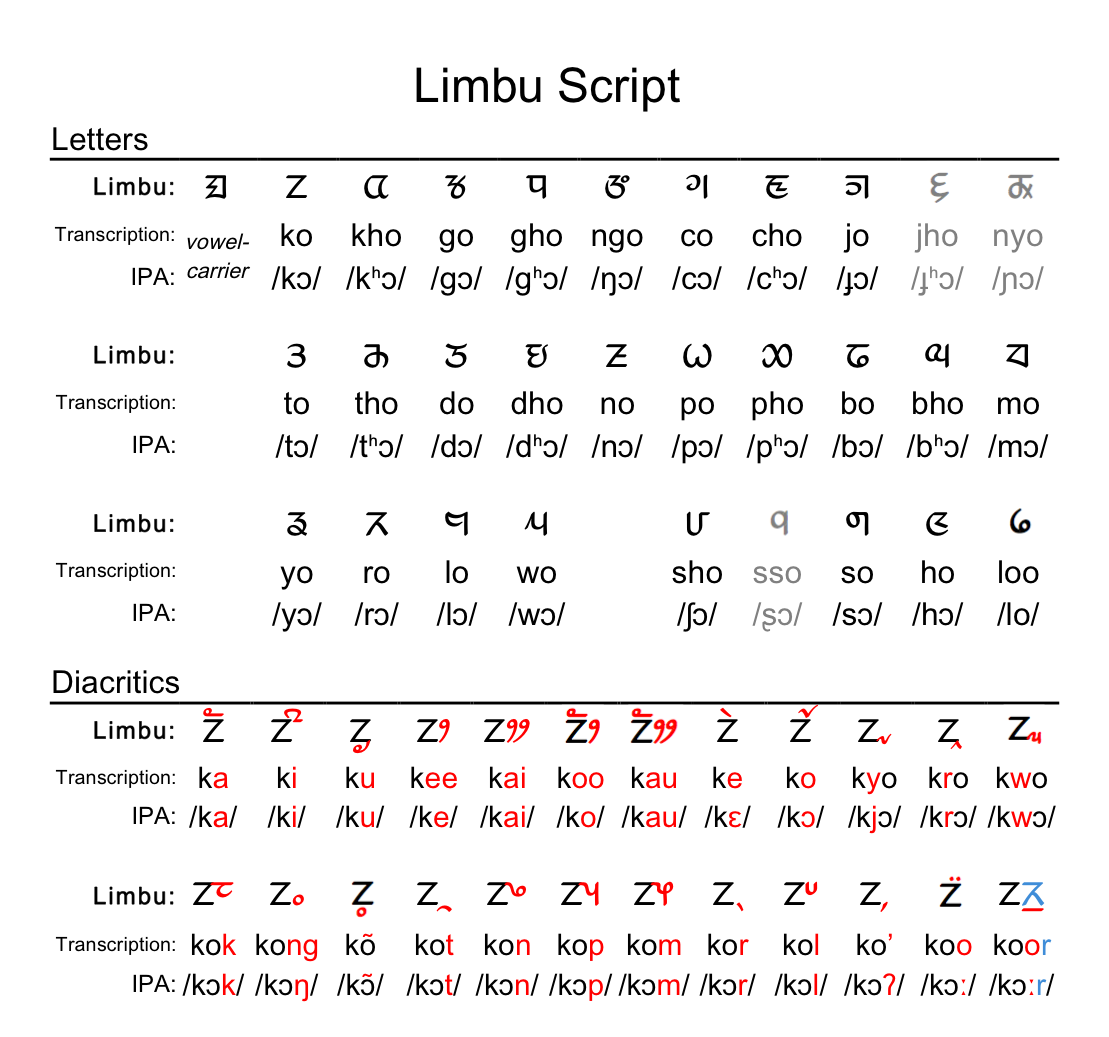|
Intrative Case
The intrative case (abbreviated ) is a case that roughly expresses the notion of the English preposition "amidst". It is found in the Limbu language, where it occurs with the locative suffix ''-ʼō''. When conjoined, the two morpheme A morpheme is any of the smallest meaningful constituents within a linguistic expression and particularly within a word. Many words are themselves standalone morphemes, while other words contain multiple morphemes; in linguistic terminology, this ...s are pronounced as ''-lummō''. References * {{Grammatical cases Grammatical cases ... [...More Info...] [...Related Items...] OR: [Wikipedia] [Google] [Baidu] |
List Of Glossing Abbreviations
This article lists common abbreviations for grammatical terms that are used in linguistic interlinear glossing of oral languages in English. The list provides conventional glosses as established by standard inventories of glossing abbreviations such as the Leipzig Glossing Rules, Leipzig Glossing rules, the most widely known standard. Synonymous glosses are listed as alternatives for reference purposes. In a few cases, long and short standard forms are listed, intended for texts where that gloss is rare or uncommon. Conventions * Grammatical abbreviations are generally written in full or small caps to visually distinguish them from the translations of lexical words. For instance, capital or small-cap (frequently abbreviated to ) glosses a grammatical past-tense morpheme, while lower-case 'past' would be a literal translation of a word with that meaning. Similarly, (small) cap might be a locative suffix used in nominal inflections, prototypically indicating direction downward b ... [...More Info...] [...Related Items...] OR: [Wikipedia] [Google] [Baidu] |
Limbu Language
Limbu (Limbu: , ''yakthuṅ pan'') is a Sino-Tibetan language spoken by the Limbu people of Nepal and Northeastern India (particularly West Bengal, Sikkim, Assam and Nagaland) as well as expatriate communities in Bhutan. The Limbu refer to themselves as ''Yakthung'' and their language as ''Yakthungpan.'' Yakthungpan has four main dialects: Phedape, Chhathare, Tambarkhole and Panthare dialects.A Grammar of Limbu By George van Driem 1987 Among four dialects, the Phedape dialect is widely spoken and well understood by most Yakthungpan speakers. However, as there are some dominant Panthare scholars who have role to create knowledge and control knowledge in the Limbu communities, Panthare dialect is being popularised as a "standard" Limbu language. As Panthare Yakthungs are much more engaged in central political position and administrative positions, they are trying to introduce Panthare dialect as a Standard Yakthungpan. Yakthungpan (Limbu language) is one of the major languages ... [...More Info...] [...Related Items...] OR: [Wikipedia] [Google] [Baidu] |
Locative Case
In grammar, the locative case ( ; abbreviated ) is a grammatical case which indicates a location. In languages using it, the locative case may perform a function which in English would be expressed with such prepositions as "in", "on", "at", and "by". The locative case belongs to the general local cases, together with the lative and ablative case. The locative case exists in many language groups. Indo-European languages The Proto-Indo-European language had a locative case expressing "place where", an adverbial function. The endings are reconstructed as follows: In most later Indo-European languages, the locative case merged into other cases (often genitive or dative) in form and/or function, but some daughter languages retained it as a distinct case. It is found in: * modern Balto-Slavic languages, except Bulgarian and Macedonian, although it is mostly used with prepositions in the other Slavic languages * some classical Indo-European languages, particularly Sanskrit and O ... [...More Info...] [...Related Items...] OR: [Wikipedia] [Google] [Baidu] |
Morpheme
A morpheme is any of the smallest meaningful constituents within a linguistic expression and particularly within a word. Many words are themselves standalone morphemes, while other words contain multiple morphemes; in linguistic terminology, this is the distinction, respectively, between free and bound morphemes. The field of linguistic study dedicated to morphemes is called morphology. In English, inside a word with multiple morphemes, the main morpheme that gives the word its basic meaning is called a root (such as ''cat'' inside the word ''cats''), which can be bound or free. Meanwhile, additional bound morphemes, called affixes, may be added before or after the root, like the ''-s'' in ''cats'', which indicates plurality but is always bound to a root noun and is not regarded as a word on its own. However, in some languages, including English and Latin Latin ( or ) is a classical language belonging to the Italic languages, Italic branch of the Indo-European langua ... [...More Info...] [...Related Items...] OR: [Wikipedia] [Google] [Baidu] |
